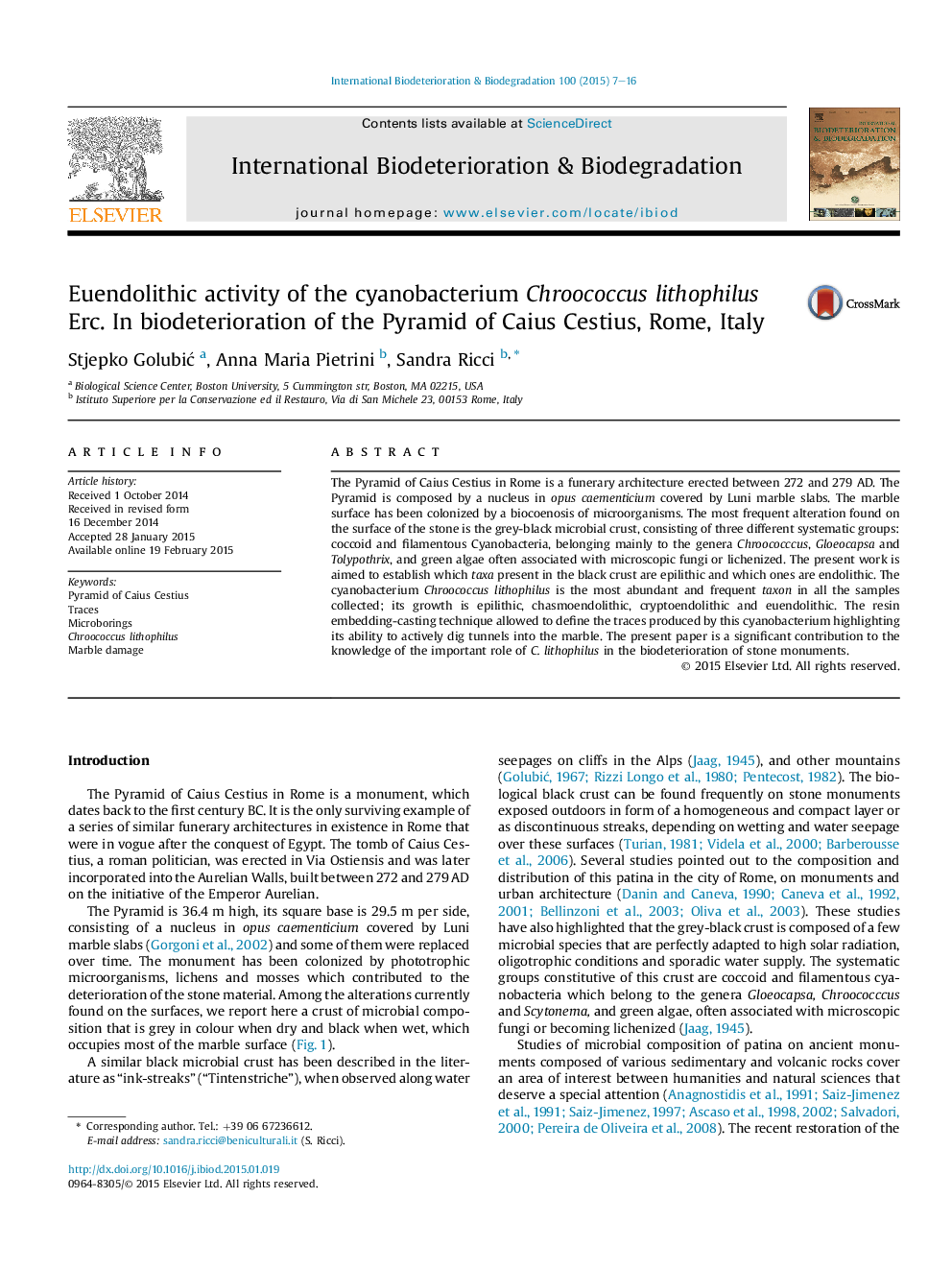| کد مقاله | کد نشریه | سال انتشار | مقاله انگلیسی | نسخه تمام متن |
|---|---|---|---|---|
| 4364429 | 1616317 | 2015 | 10 صفحه PDF | دانلود رایگان |

• Marble slabs of Pyramid have been colonized by a biocenosis of microorganisms.
• Grey-black microbial crust is made of Cyanobacteria, green algae, microscopic fungi.
• Chroococcus lithophilus is the most frequent taxon in all the marble samples collected.
• The resin-embedding technique allowed to define the traces produced by C. lithophilus.
• C. lithophilus is an euendolithic microorganism actively excavating tunnels inside the marble.
The Pyramid of Caius Cestius in Rome is a funerary architecture erected between 272 and 279 AD. The Pyramid is composed by a nucleus in opus caementicium covered by Luni marble slabs. The marble surface has been colonized by a biocoenosis of microorganisms. The most frequent alteration found on the surface of the stone is the grey-black microbial crust, consisting of three different systematic groups: coccoid and filamentous Cyanobacteria, belonging mainly to the genera Chroococccus, Gloeocapsa and Tolypothrix, and green algae often associated with microscopic fungi or lichenized. The present work is aimed to establish which taxa present in the black crust are epilithic and which ones are endolithic. The cyanobacterium Chroococcus lithophilus is the most abundant and frequent taxon in all the samples collected; its growth is epilithic, chasmoendolithic, cryptoendolithic and euendolithic. The resin embedding-casting technique allowed to define the traces produced by this cyanobacterium highlighting its ability to actively dig tunnels into the marble. The present paper is a significant contribution to the knowledge of the important role of C. lithophilus in the biodeterioration of stone monuments.
Journal: International Biodeterioration & Biodegradation - Volume 100, May 2015, Pages 7–16